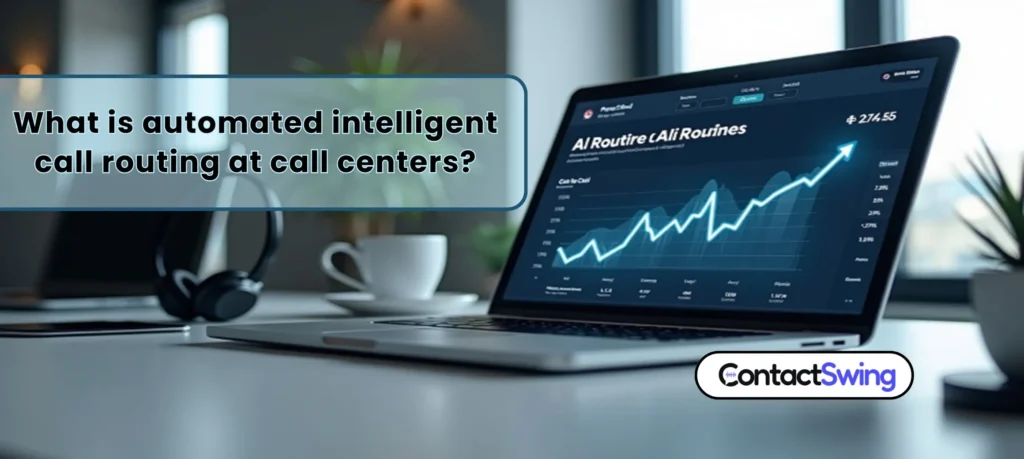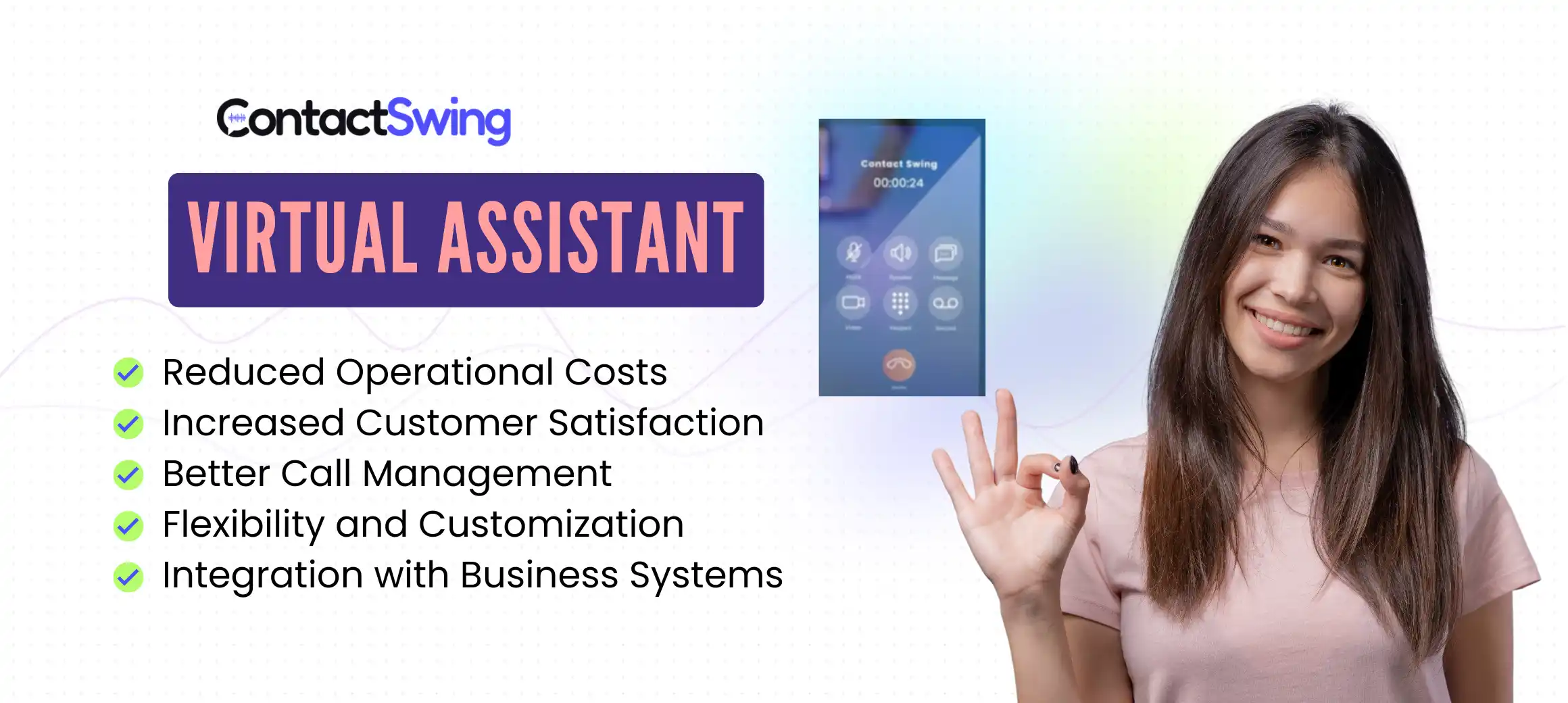
In today’s fast-paced, customer-first economy, every call matters.
Whether you’re a healthcare provider needing to schedule appointments faster or an insurance firm juggling claims and policy inquiries, the last thing you want is a frustrated customer bouncing between agents. This is where an automated call routing system powered by an AI voice agent goes from being a convenience to a competitive advantage.
In this guide, we’ll explore how modern businesses are leveraging intelligent call routing powered by voice AI platform technology to improve customer experience, reduce operational costs, and supercharge team efficiency. Backed by real-world use cases from U.S.-based businesses and clear ROI examples, you’ll discover how ContactSwing.ai is leading the next generation of smart voice automation.
Table of Contents
1. What is an Automated Call Routing System?
2. Why Traditional Routing Falls Short
3. How AI-Powered Call Routing Works
4. Use Cases Across Key Industries
5. AI Voice Agent vs. Human Agent: Quick Comparison
6. Benefits of Using an Automated Call Routing System
7. Key Features to Look For
8. Setting Up a Smart Routing System with ContactSwing
9. Best Practices for Maximizing ROI
10. Get Started with ContactSwing AI Voice Agents
What is an Automated Call Routing System?
An automated call routing system intelligently directs incoming calls to the most suitable agents, departments, or workflows based on rules, caller data, and system logic. Unlike basic “press 1 for sales” menus, these systems use advanced tools such as AI, skill-based routing, historical caller data, and even intent detection to connect customers with the most relevant resource—instantly.
Related Terms:
• IVR (Interactive Voice Response)
• ACD (Automatic Call Distributor)
• Voice AI Call Routing
• Dynamic Call Flows
• Skill-based Routing
Why Traditional Routing Falls Short
Traditional call centers rely heavily on static IVR menus or human receptionists, which often leads to:
• Long hold times.
• Frustrated callers are repeating their issues multiple times.
• High call abandonment rates.
• Poor first-call resolution (FCR).
Did you know? According to a Zendesk report, 62% of customers consider a poor call experience enough to stop buying from a brand.
Today’s consumers-especially digital-first ones—expect speed, accuracy, and personalization.
That’s where ContactSwing’s automated call routing system steps in, routing calls based on real-time analysis, caller history, agent skill sets, and business logic.
How AI-Powered Call Routing Works
At the heart of an intelligent call routing system lies machine learning and voice-based automation. Let’s break it down:
Core Components:
1. Caller Identification
• Pulls info using ANI (Automatic Number Identification) and CRM integration.
• Looks up past interactions or account status automatically.
2. Intent Detection through AI
• Uses NLP (Natural Language Processing) to understand open-ended caller statements like “I want to update my policy.”
3. Skill-Based & Rule-Based Distribution
• Matches customer needs to available agents with the right expertise.
• Prioritizes high-value customers or urgent calls.
4. Multichannel Routing
• Works across phone, text, voicemail, and integrations with helpdesks like Zendesk or CRMs like Salesforce.
5. Fallback & Cascading Logic
• If an ideal agent is busy, the system escalates to the next best available option, never dropping the ball.
Explore related concepts in A Complete Guide to Automated Customer Service.
Use Cases Across Key Industries
Healthcare staffing automation
Problem: Patients wait too long to reach billing or scheduling departments.
Solution: ContactSwing routes calls based on appointment type, insurance status, or preferred provider—often reducing wait time by up to 60%.
Recruitment automation with AI voice calling
Problem: Missed candidate follow-ups and recruiter overload during hiring sprints.
Solution: AI agents pre-screen candidates and direct them to the right recruiter based on skill match, location, and job category.
Problem: Inquiries about listings often go unanswered after hours.
Solution: Voice agents handle incoming property calls, auto-route leads to assigned agents, and schedule callbacks or tours.
Problem: Callers hang up due to long hold times or end up in the wrong department.
Solution: Smart routing ensures policyholders get directed accurately based on claim type or renewal dates.
For more, see Revolutionizing Real Estate: How AI Enhances Client Experiences.
AI Voice Agent vs. Human Agent: Quick Comparison
| Feature | AI Voice Agent (ContactSwing) | Traditional Human Agent |
|---|---|---|
| Available 24/7 | ✅ | ❌ (Limited shifts) |
| Call routing accuracy | 95%+ (intent-based) | 70–80% |
| Hold times | < 10 secs avg | 2–5 mins avg |
| Cost per interaction | Low (flat/success-based) | High (hourly wage) |
| Data integration | Real-time & automatic | Manual input/logging |
| Call personalization | CRM integrated | Depends on memory |
| Scalability | Unlimited | Requires hiring |
CTA: Want to try AI call routing with zero upfront cost? Get a free trial of ContactSwing now →
Benefits of Using an Automated Call Routing System
1. Smart Efficiency Gains
2. Faster Response and Shorter Handle Times
3. Increase Sales and Conversions
4. Enhanced Compliance and Consistency
5. Secure, Scalable Infrastructure
Key Features to Look For
✅ AI-Powered Intent Detection
✅ Dynamic Workflow Builder
✅ CRM, EHR, ATS Integration
✅ 24/7 Availability With No Human Supervision
✅ Real-Time Analytics & KPI Dashboards
✅ Multi-Language Support
✅ Call Recording & Compliance Safeguards
✅ Callback & Voicemail Routing
✅ Agent Availability Awareness
Setting Up a Smart Routing System with ContactSwing
You’re not alone in deploying AI call automation. ContactSwing’s customer success engineers take you through:
1. Workflow Mapping
2. Integration Setup
3. Custom Prompt Design
4. Live Testing & Tuning
5. Performance Analysis & Optimization
See also: How to Build an AI Voice Agent with No Code.
Best Practices for Maximizing ROI
1. Regularly Refresh Routing Logic
2. Segment Callers for Personalization
3. Train Agents with Voice Transcripts
4. Sync With Business Data
Get Started with ContactSwing AI Voice Agents
Ready to make the switch?
Schedule a live demo now and see how ContactSwing can transform the way your business handles calls.
Final Thoughts
Implementing an automated call routing system isn’t just about slashing customer wait time. It’s about intelligently orchestrating every phone interaction—so that customers, employees, and bottom lines all benefit.
As competition intensifies across industries, AI-powered automation is no longer a nice-to-have. It’s the new operating standard for businesses serious about optimizing service, sales, and support.




